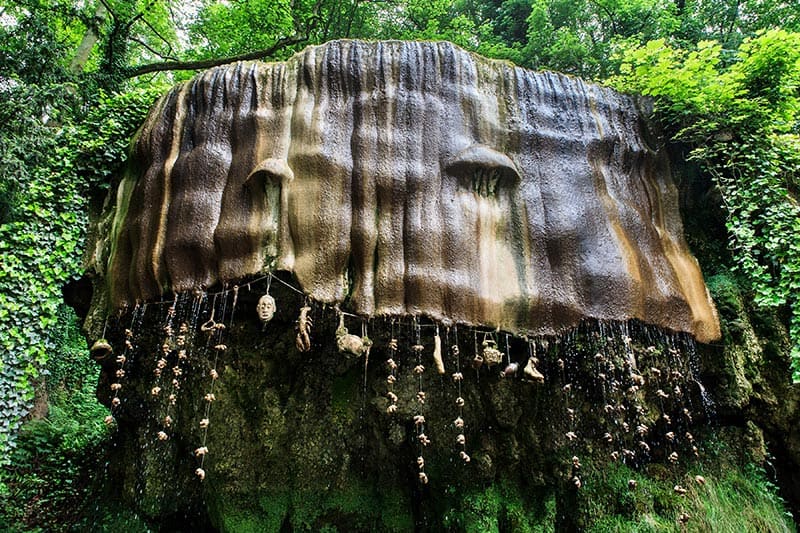LONDON (Web Desk) – Located on the banks of the river Nidd, near Knaresborough in North Yorkshire, England, is a mystical well that converts objects to stone.
Any object touched by the well’s dripping waters – leaves, sticks, dead birds, and more – naturally turn to stone within a few months!
For many centuries, locals believed that the Petrifying Well was cursed by the devil – a myth fueled by the fact that the side of the well looks like a giant’s skull.
They constantly lived with the fear that if they touched the well’s water, they would be turned to stone too.
A few adventurous people left everyday objects near the waterfall, only to witness the transformation occur over weeks.
Some of these relics can be spotted even today, like a Victorian top hat and a lady’s bonnet from the 1800s – both converted to solid stone.
More recently, people have left teddy bears, kettles, and even a bicycle in the petrifying well, with similar results, the Oddity Central reported.
But history shows that the well wasn’t always known for its petrifying qualities.
The earliest known reference to it was by John Leyland, antiquarian to Henry VIII. In 1538, he wrote that people believed the well to have miraculous healing properties. Many bathed under its waters to be cured from various ailments.
In the early 1600s, a medical physician examined samples of water and concluded that it was a miracle cure for “any flux of the body.”
But as locals began to observe objects slowly turn to stone, the well’s reputation turned sour.
Another reason for the well’s soaring disrepute was that Mother Shipton – the daughter of a local prostitute – was born in a cave near the well.
Mother Shipton is said to have been hideously ugly since birth, so much so that people believed her father was the devil himself.
As she grew older, the strange woman allegedly displayed psychic powers. She is said to have accurately prophesied the Great Fire of London in 1666, the defeat of the Spanish Armada in 1588, and even the invention of cell phones.
In 1630, the section of the Royal Forest that contained the well was sold by King Charles I to a local gentleman named Sir Charles Slingsby.
The well was ridiculously popular by then, so Slingsby began to charge visitors for guided tours, unintentionally creating England’s first tourist attraction.
HIGH MINERAL CONTENTS
Eventually, modern day scientists got around to analyzing water samples from the Petrifying Well, debunking the legend surrounding it. The water was found to contain a high mineral content that forms a coating around objects.
With prolonged exposure, the coating would create a hard mineral shell, a lot like how stalactites and stalagmites form, but at a much faster pace. In fact, the calcite levels in the water are so high that visitors are forbidden from drinking it!
Tourists who visit the Petrifying Well these days are treated to the sight of several objects strung alongside it, slowly being petrified under its cascading waters.
Small teddy bears are regularly placed under the water, and once solidified, are sold at souvenir shops nearby.























